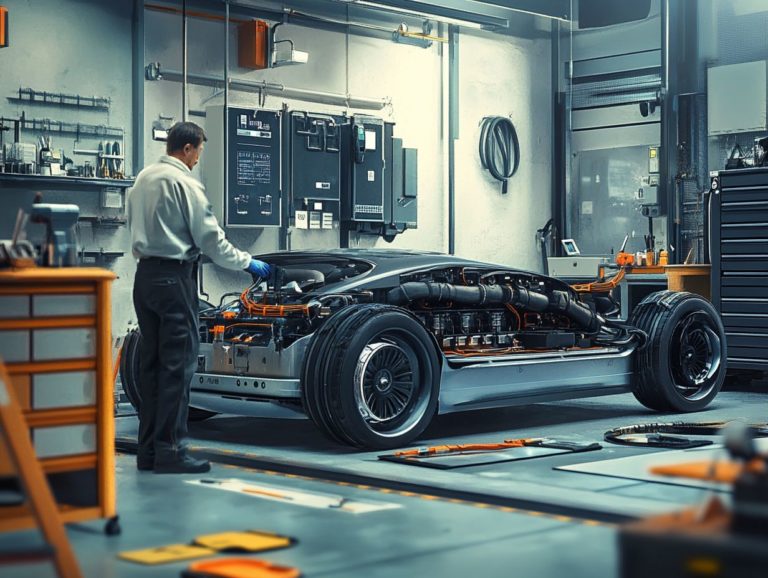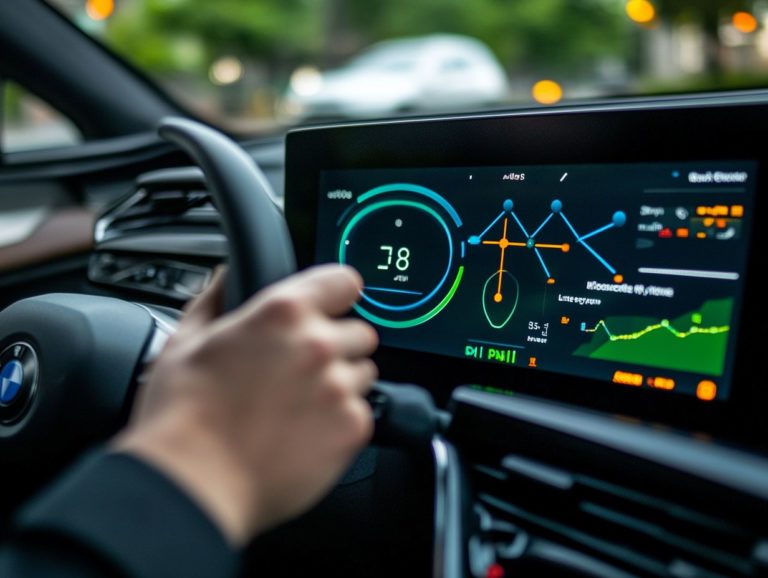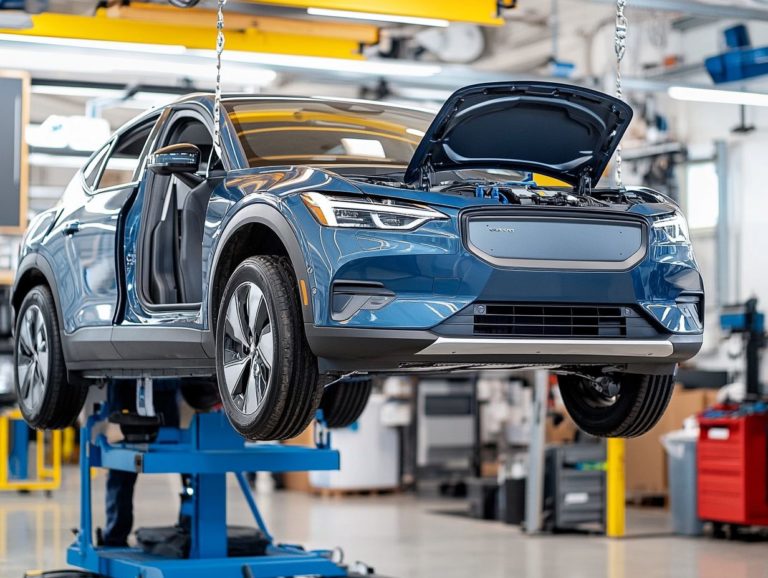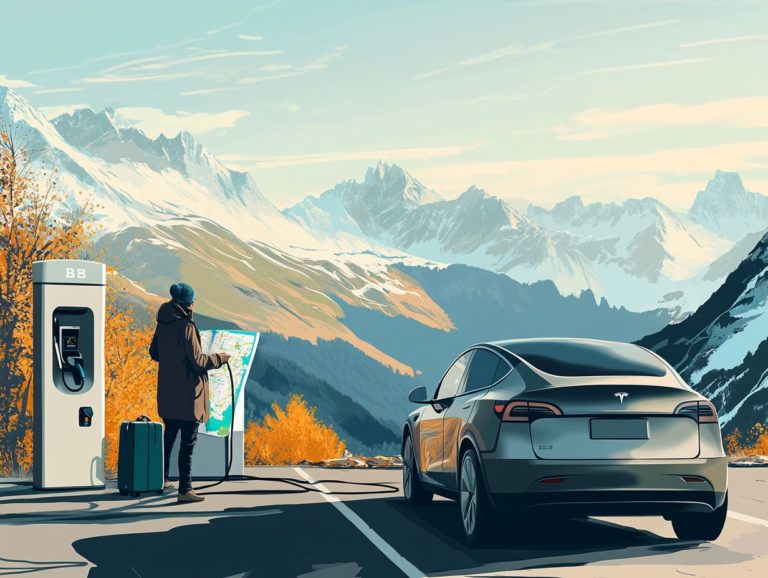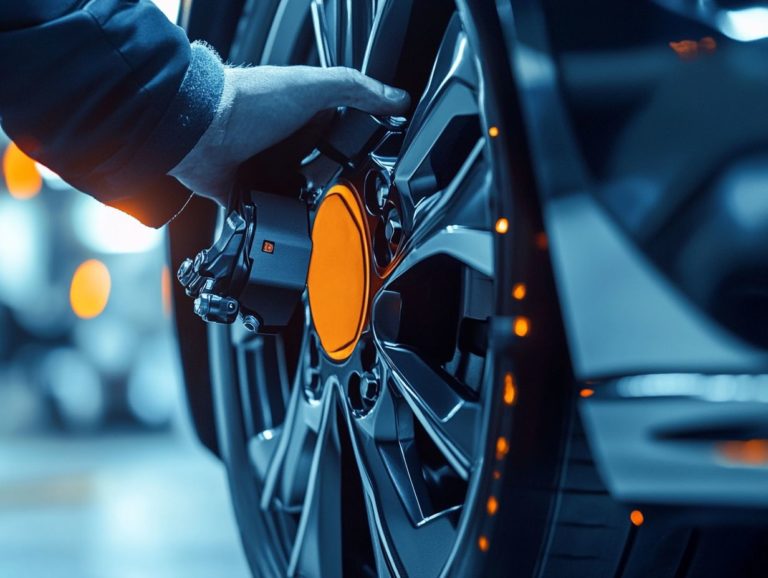5 Common EV Battery Issues and Solutions
Electric vehicles (EVs) are revolutionizing your approach to transportation, yet they present their own set of challenges.
One of the most pressing concerns for EV owners is battery performance. You may encounter issues such as limited battery life, lengthy charging times, overheating, and unpredictable range estimates. Grasping these common challenges is essential for optimizing your EV experience.
This guide delves into these hurdles, providing practical solutions and outlining best practices for maintaining your EV battery. Whether you’re a seasoned EV driver or contemplating the switch, it offers a roadmap to driving smarter and more efficiently.
Contents
- Key Takeaways:
- 1. Short Battery Life
- 2. Charging Time Takes Too Long
- 3. Battery Capacity Decreases in Cold Weather
- 4. Battery Overheating
- 5. Inconsistent Range Estimation
- How Can EV Battery Issues Be Avoided?
- Frequently Asked Questions
- What are the most common issues with EV batteries?
- Can I prevent range decrease in my EV battery?
- What can cause slow charging in EV batteries?
- How can I improve the performance of my EV battery in cold weather?
- Can You Repair a Worn-Out EV Battery?
- What Are Your Options Instead of Buying a New EV Battery?
Key Takeaways:
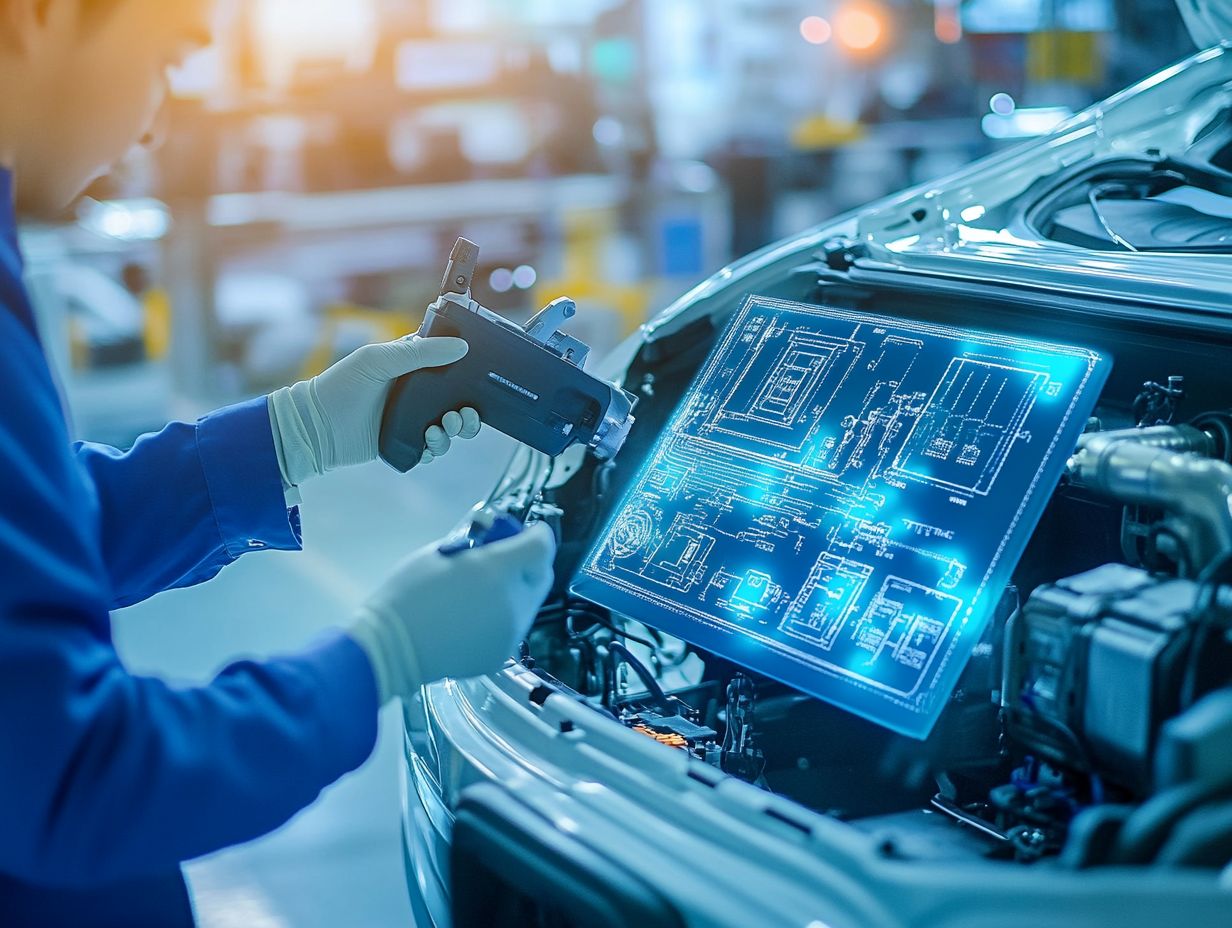
- Regular maintenance and proper charging practices can extend the lifespan of EV batteries.
- Extreme temperatures can affect the performance and capacity of EV batteries, so it’s important to plan for weather conditions when driving and charging.
- Understanding these key points is crucial for maximizing your EV experience!
1. Short Battery Life
Short battery life is a major concern for electric vehicle (EV) owners, as it significantly affects your driving experience and raises questions about EV sustainability.
Factors like how much energy you use while driving and varying driving conditions play a role. Rapid acceleration and deceleration can drain your battery faster.
Advancements in battery technology, especially with lithium-ion batteries, offer ways to enhance battery performance and manage degradation effectively. To ensure your electric vehicle remains in top shape, consider exploring 5 ways to keep your EV running smoothly, as you may still encounter challenges in real-world conditions.
Understanding the chemistry behind your batteries is essential, as different temperatures can impact their performance. Being aware of these factors gives you the power to make informed decisions about charging and usage.
According to J.D. Power, many EV users express significant concerns about range and charging times, emphasizing the importance of grasping both battery care and personal driving practices. As Eric Cohen points out, enhancing your habits and knowledge can lead to meaningful performance improvements.
2. Charging Time Takes Too Long
The lengthy charging process can be frustrating, especially when you think about how quickly traditional cars refuel. This common hurdle can hinder your adoption of electric vehicles (EVs) and fuel that nagging range anxiety.
Fortunately, a variety of charging options are emerging to alleviate these concerns. Fast charging stations are becoming increasingly available along highways and in urban centers, significantly cutting down the time required to charge your EV and offering you peace of mind during long journeys.
At home, you can choose Level 2 chargers, allowing you to conveniently charge your vehicle overnight and creating a seamless experience. The ongoing development of charging infrastructure is essential in alleviating range anxiety, as more stations are installed in key locations.
Innovations in smart charging technology offer even greater efficiency and convenience, enabling you to charge your vehicle when energy prices dip or during optimal grid conditions.
3. Battery Capacity Decreases in Cold Weather
Battery capacity can take a significant hit in cold weather. This can challenge you, an electric vehicle (EV) owner, who depends on reliable driving range and battery performance. The issue primarily stems from how temperature affects battery chemistry. Additionally, energy density leads to reduced efficiency that may impact your daily commute.
In frigid conditions, lithium-ion batteries may experience slower chemical reactions. This results in less power output and a reduced range. Automakers are well aware of these hurdles and have implemented various heat management systems to alleviate performance issues.
Take Tesla, for example. They utilize advanced thermal management in their vehicles, allowing the battery to maintain optimal temperatures, regardless of the external chill. The Chevrolet Bolt is also equipped with an active thermal management system that helps regulate battery temperature, ensuring consistent performance. Hyundai tackles this with its Kona Electric, employing strategies to keep the battery within a stable range. This demonstrates how technology can elevate your EV driving experience, even in challenging climates.
4. Battery Overheating
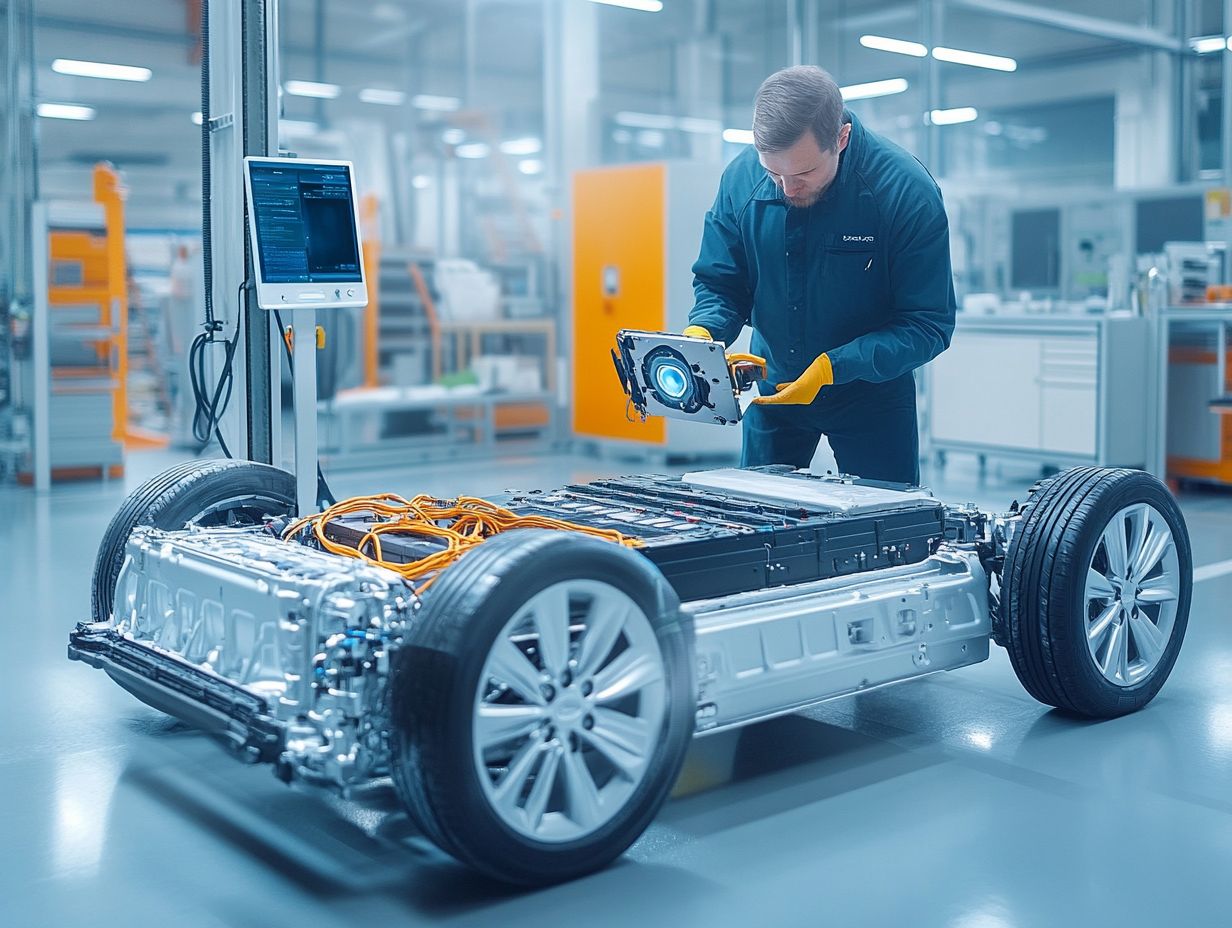
Battery overheating is a significant concern for electric vehicles (EVs). It can potentially compromise both safety and performance over time. Effective battery management systems help control temperature, ensuring optimal functionality and improving overall vehicle efficiency.
Several factors contribute to overheating, including driving conditions like steep inclines, high-speed driving, and extreme weather. Improper charging practices can also worsen the situation, such as rapid charging without adequate cooling or exposing batteries to elevated temperatures.
Fortunately, companies like LG Energy Solutions tackle these challenges by implementing advanced thermal management technologies to minimize risks. Insights from McKinsey & Co highlight that enhancing these systems boosts safety while also elevating the reliability and longevity of the battery. This fosters greater consumer confidence in adopting electric vehicles.
5. Inconsistent Range Estimation
Inconsistent range estimation can be a significant source of frustration for electric vehicle (EV) owners. It complicates trip planning and fuels that ever-present range anxiety. A variety of factors contribute to these discrepancies, including battery performance, driving conditions, and the efficiency of your vehicle’s charging system.
Other elements also impact achieving accurate range estimates. Your energy consumption patterns, shaped by factors like vehicle load and terrain, can greatly influence how far you can go. Weather conditions, such as temperature and humidity, can further interfere with battery efficiency, directly impacting your overall range.
Regularly maintain your vehicle, including tire care and fluid checks, for the best performance. Advancements in battery technology promise to deliver more precise algorithms that predict distance using real-time data. Stay informed about battery technology to enjoy a smoother ride!
How Can EV Battery Issues Be Avoided?
To sidestep issues related to EV batteries, you need to take a comprehensive approach that includes good battery management, regular vehicle maintenance, and well-informed charging options. By understanding the factors that impact battery life and performance, such as temperature and driving conditions, you can enhance your electric journey while minimizing potential hiccups. Additionally, be sure to avoid the 5 common EV maintenance mistakes that can further improve your experience.
Incorporating best practices, like optimal charging techniques, is essential. Aim to avoid frequent fast charging and keep your charge level between 20% and 80%. Regular inspections of the battery and ensuring proper cooling will also help prolong its lifespan.
Engaging in battery recycling initiatives that prioritize sustainable solutions is important. Organizations like UNICEF emphasize the significance of responsible resource management.
These practices matter not just for you as a car owner but also for significant regions like the Democratic Republic of Congo, where lithium and cobalt mining raises ethical concerns. By advocating for sustainable sourcing and recycling, you can play a vital role in fostering a healthier EV ecosystem.
What Factors Affect EV Battery Life?
Several factors influence the lifespan of your electric vehicle (EV) battery, including driving conditions, temperature, and the materials that make up the battery. Knowing these factors helps you get the most out of your EV investment.
Your driving habits can make a significant difference. Frequent hard acceleration or high-speed driving can place undue stress on the battery, leading to a quicker decline in performance. Extreme weather, whether it’s sweltering heat or bone-chilling cold, can dramatically impact your battery’s efficiency and overall lifespan.
Insights from industry experts, such as J.D. Power, underscore the necessity of effective temperature management and charging practices. To prevent premature degradation, keep your battery healthy by:
- Avoiding full charges and deep discharges
- Parking in shaded or climate-controlled environments whenever possible
These proactive measures are crucial for maintaining your battery’s health over the long term.
What Are the Different Types of EV Batteries and Their Pros and Cons?
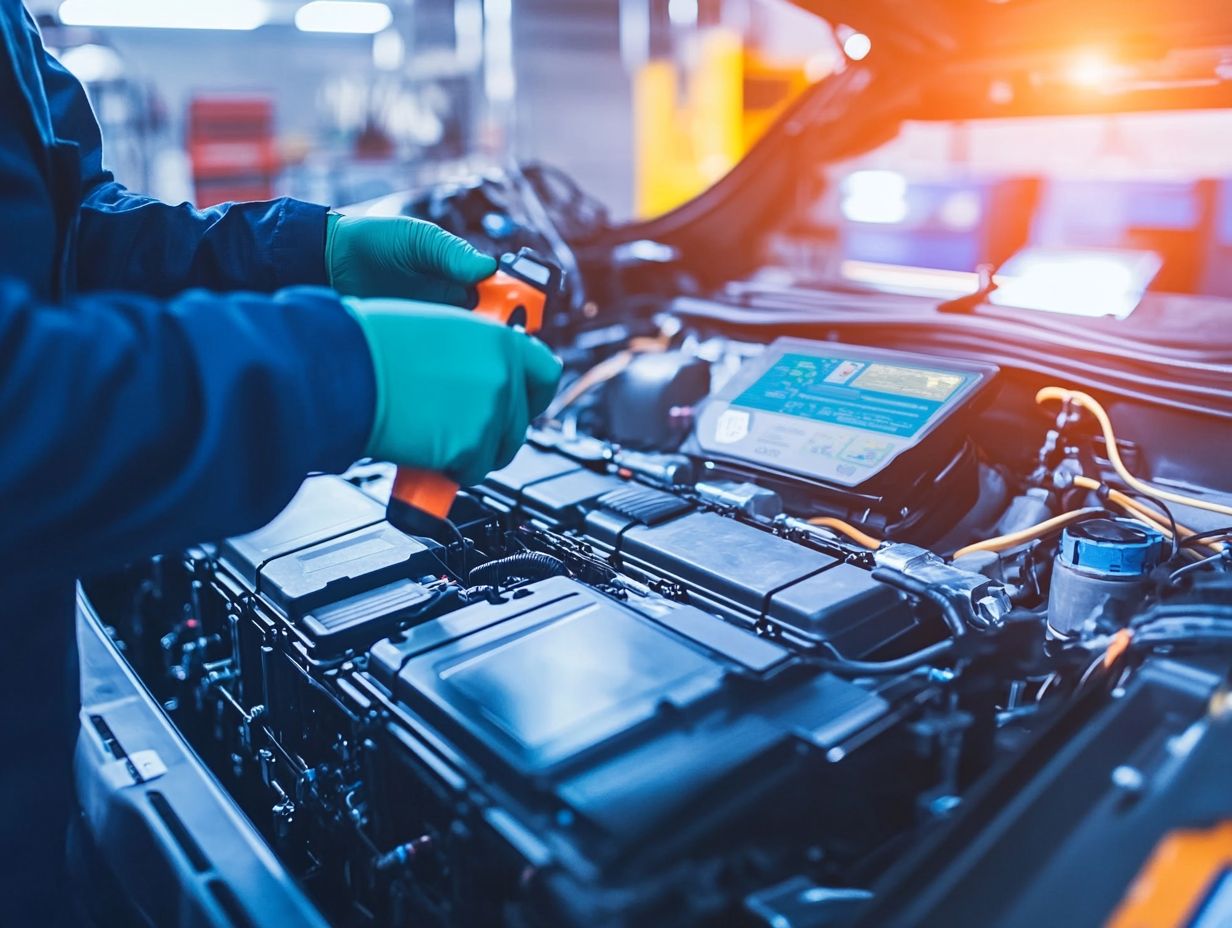
Electric vehicles (EVs) rely on various battery types, with lithium-ion reigning supreme thanks to its impressive energy density and efficiency. However, each battery chemistry has its own unique advantages and drawbacks. Grasping these nuances will empower you to make well-informed choices regarding battery leasing and vehicle selection.
Among the contenders, nickel-metal hydride batteries may offer a longer lifespan, but they don’t quite match the energy capacity of their lithium-ion counterparts. On the horizon, solid-state batteries are gaining traction as a revolutionary technology, showcasing enhanced safety features and a potentially lower environmental impact. Yet, the current high production costs and challenges in scaling up present significant hurdles for widespread adoption.
The demand for cobalt in traditional lithium-ion batteries raises important sustainability concerns, as mining practices can adversely affect communities and ecosystems. It s essential for you to consider these factors thoughtfully when choosing your EV, striking a balance between performance expectations, cost, and the ecological footprint of the battery technology.
Curious about how to prolong your EV battery s life? Here are some tips!
Taking care of your EV battery isn’t just smart; it’s essential for enjoying your electric vehicle to the fullest! Join the movement for greener transportation solutions today!
What Are the Best Practices for Charging an EV Battery?
Implementing best practices for charging your electric vehicle (EV) battery can significantly enhance both its longevity and performance. Consider utilizing a range of charging options, including fast charging and smart charging solutions. Gaining a clear understanding of battery management and the advantages of two-way charging will also contribute to a more efficient electric journey.
For instance, scheduling your charging sessions during off-peak hours can lead to lower electricity costs while easing the strain on the grid. It’s wise to avoid letting your battery discharge below 20%, as deep discharges can gradually diminish its health over time.
With the expanding charging infrastructure, you now have access to a variety of charging stations equipped with cutting-edge technology. This gives you the power to make informed charging decisions that not only optimize your EV experience but also minimize your environmental impact.
What Are Some Tips for Maintaining an EV Battery?
Maintaining an electric vehicle (EV) battery is essential for ensuring optimal performance and extending its lifespan. By adhering to several key practices, such as learning to diagnose common EV problems, you can enhance your driving experience significantly. Regular maintenance, understanding battery warranty conditions, and awareness of battery degradation are all vital components of effective battery care.
To maximize your battery’s lifespan, check the battery connections regularly, ensuring they are clean and free from corrosion. Monitoring battery health using available diagnostic tools enables you to identify potential issues before they escalate. Changing your driving habits, such as steering clear of rapid acceleration and excessive braking, can greatly contribute to battery longevity.
Understanding your warranty agreement helps clarify your coverage and informs you on the best care practices. This knowledge gives you the power to make enlightened decisions, ultimately safeguarding your investment in the long run.
What Are the Latest Innovations in EV Battery Technology?
Explore the latest innovations in electric vehicle (EV) battery technology that are tailored for you! These advancements focus on enhancing battery performance, optimizing energy storage capabilities, and creating sustainable solutions for recycling outdated batteries. These innovations play a crucial role in improving the efficiency of your electric vehicle while minimizing the environmental impact of battery production and disposal.
Exciting breakthroughs are on the horizon, such as solid-state batteries, which utilize cutting-edge materials that promise not just higher energy density but also much faster charging times. Imagine the freedom of extended driving ranges while aligning with sustainability goals through reduced resource consumption.
Collaborations with organizations like LG Energy Solutions are leading the charge toward eco-friendly manufacturing practices, and initiatives from the European Union are bolstering the shift toward greener energy solutions. Together, these partnerships paint a promising picture of a future where electric vehicles are not only more accessible to you but also environmentally responsible, significantly minimizing your carbon footprint.
Frequently Asked Questions
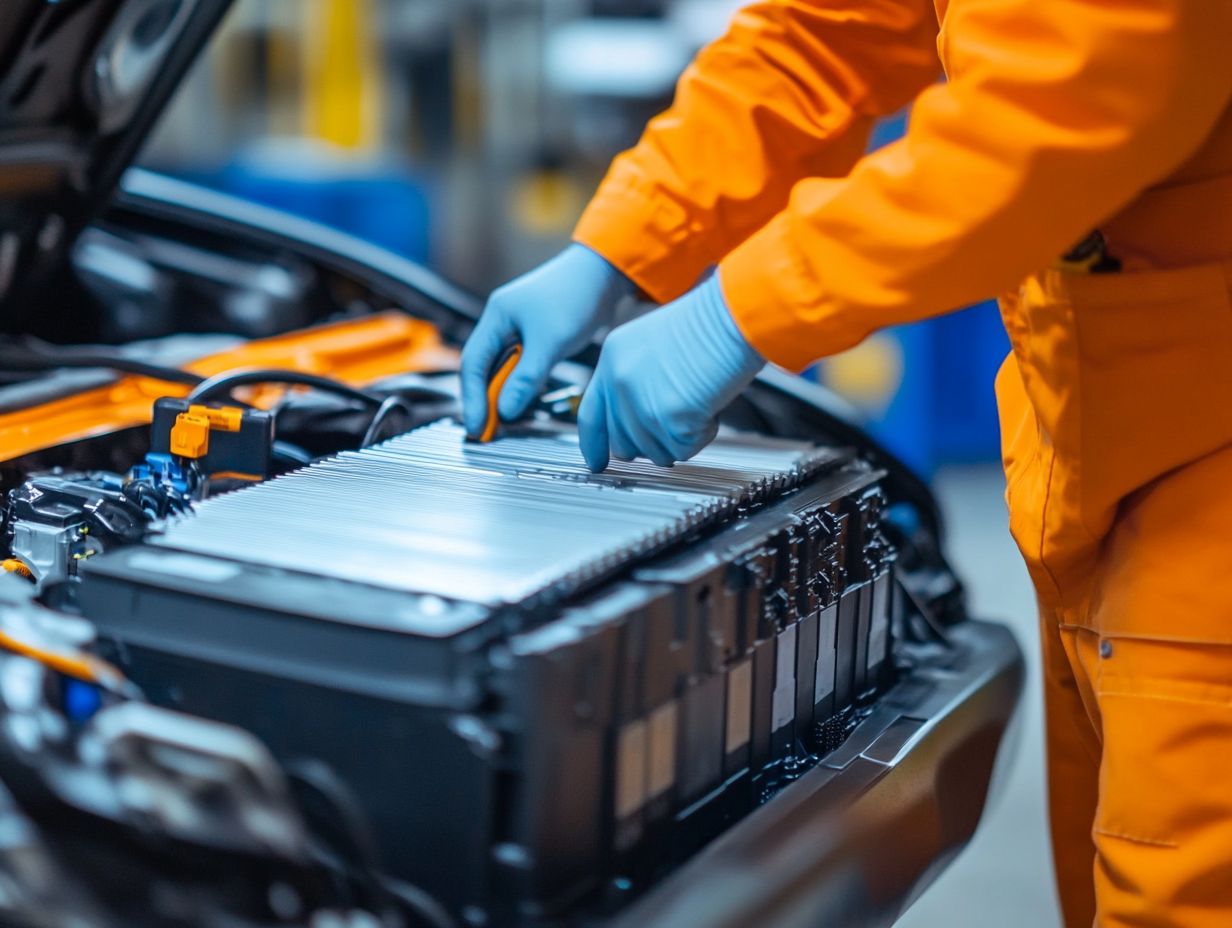
What are the most common issues with EV batteries?
- Decreased range
- Slow charging
- Premature degradation
- Cold weather performance
- High replacement cost
Can I prevent range decrease in my EV battery?
Yes, you can prevent range decrease by avoiding frequent fast charging, keeping the battery charged between 20-80%, and avoiding extreme temperatures.
What can cause slow charging in EV batteries?
Slow charging in EV batteries can be caused by a faulty charging station, a damaged charging cable, or a poor connection between the battery and the charger, which are just a few of the major challenges for electric vehicle manufacturers.
How can I improve the performance of my EV battery in cold weather?
To improve the performance of your EV battery in cold weather, preheat the battery before using it, park the car in a garage, and avoid using the heater excessively while driving.
Can You Repair a Worn-Out EV Battery?
Yes, you can sometimes fix a worn-out EV battery by replacing specific parts, like cells or modules.
Keep in mind, this can be expensive and doesn t always work.
What Are Your Options Instead of Buying a New EV Battery?
If a new battery isn t in your budget, consider recalibrating the existing one.
You could also use a battery booster or look for a certified refurbished battery as a cheaper alternative.

